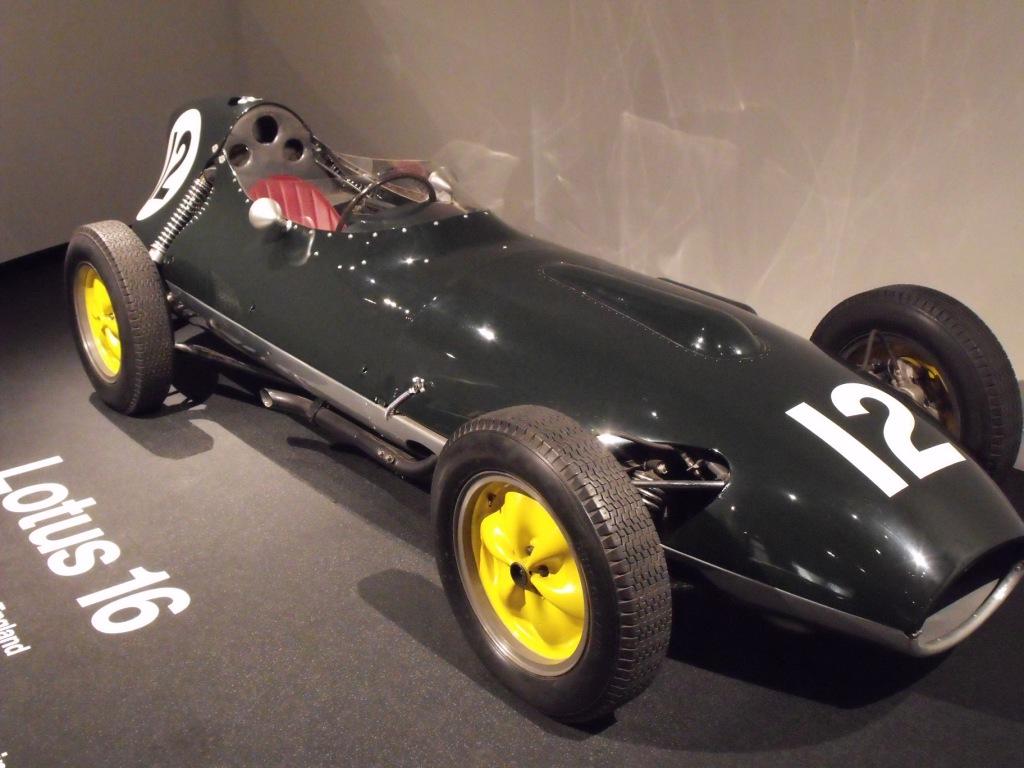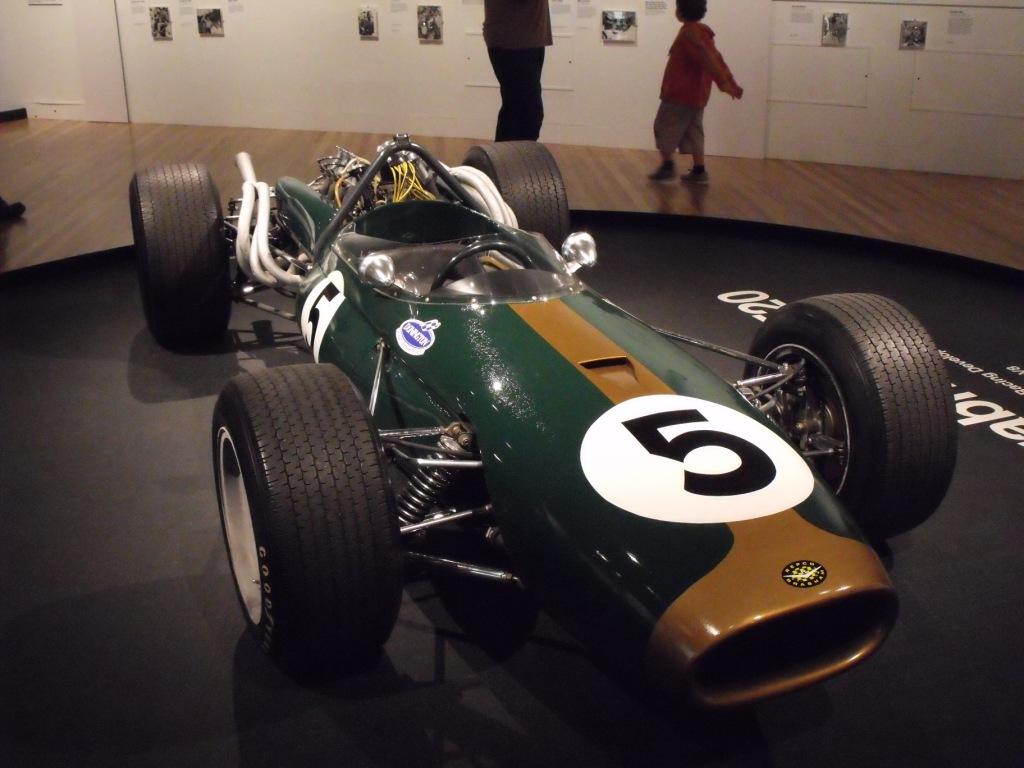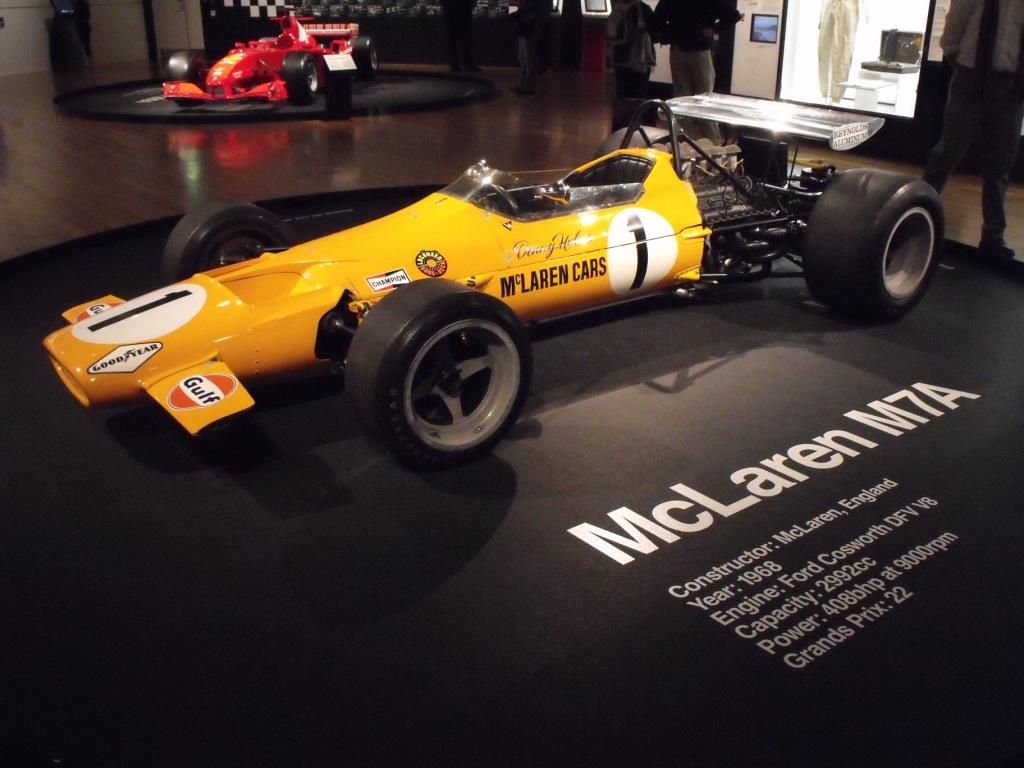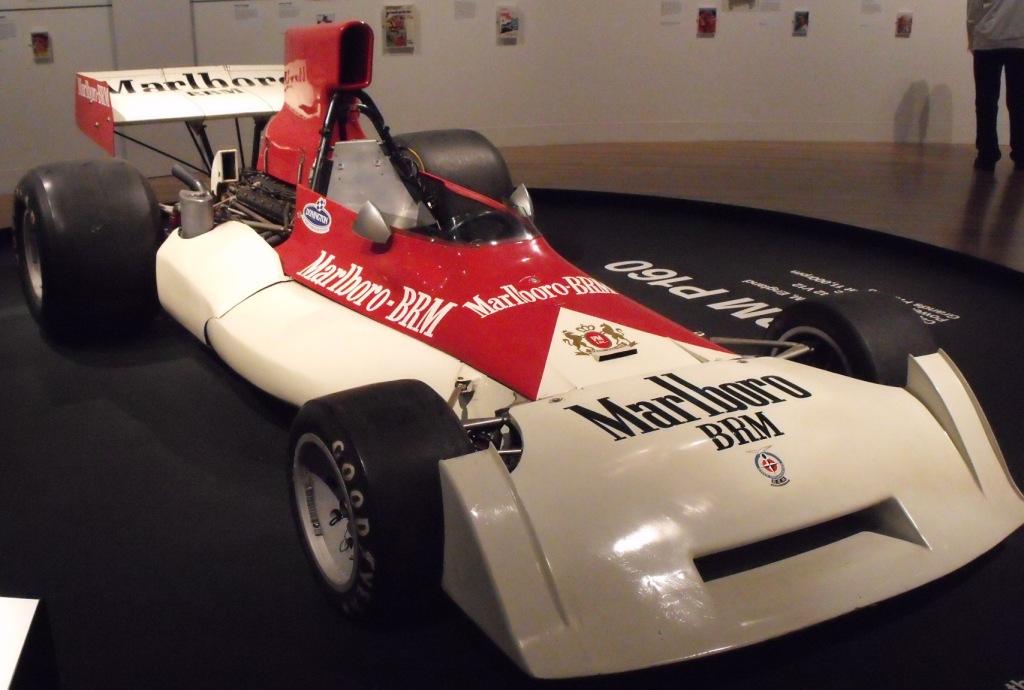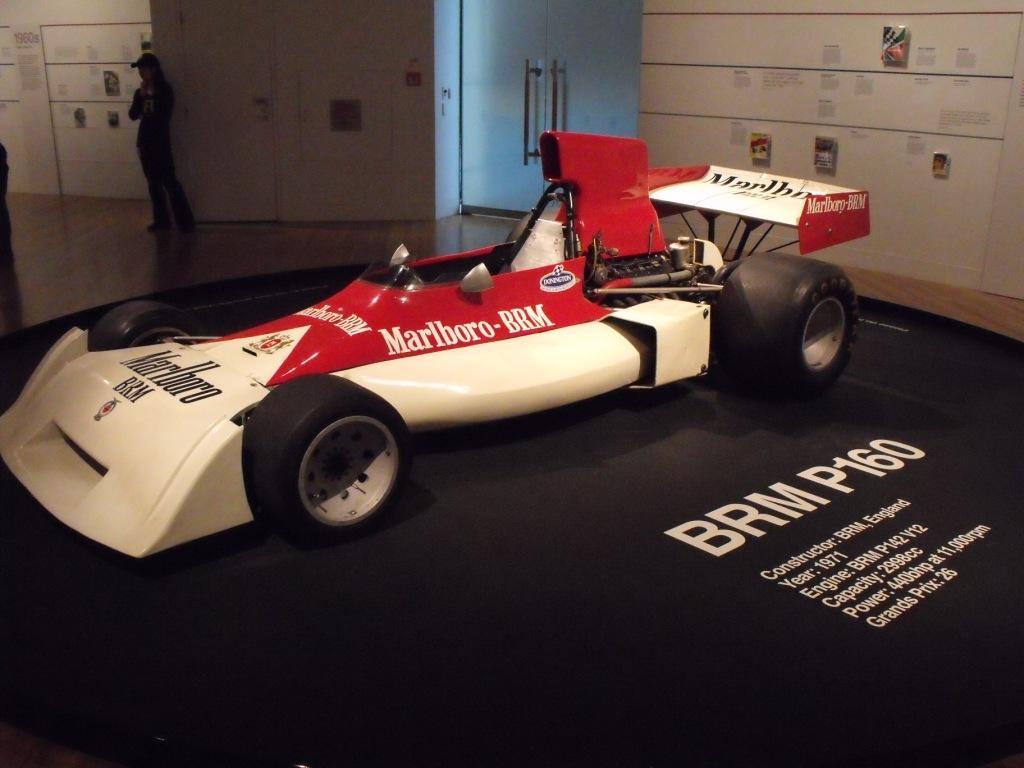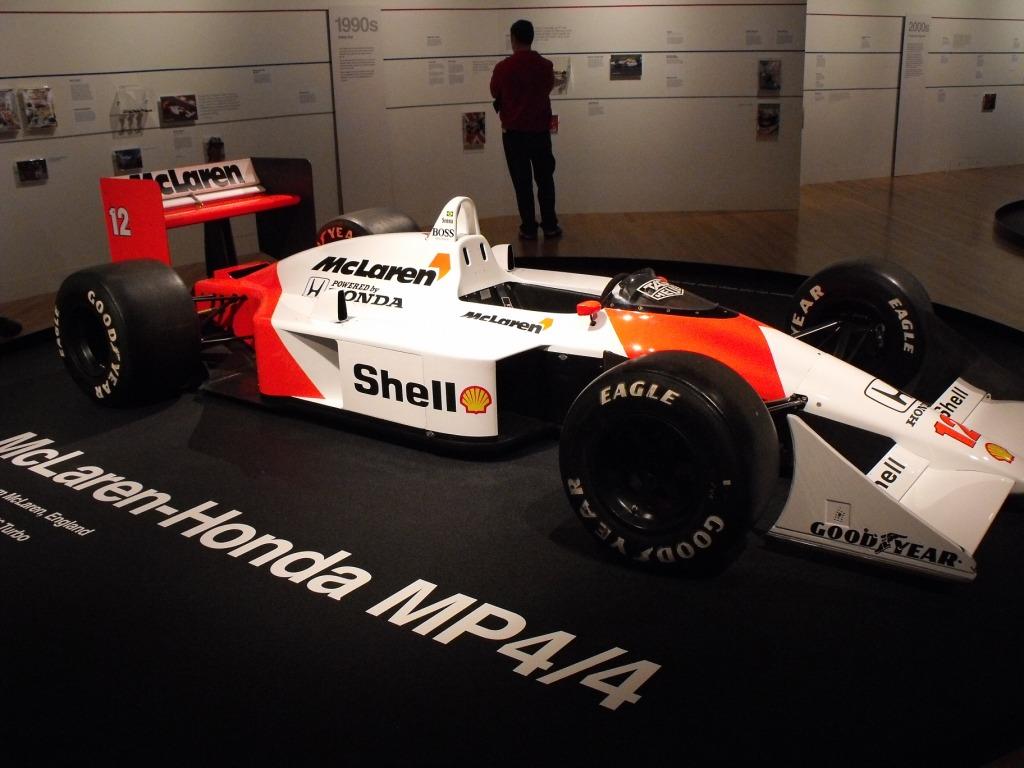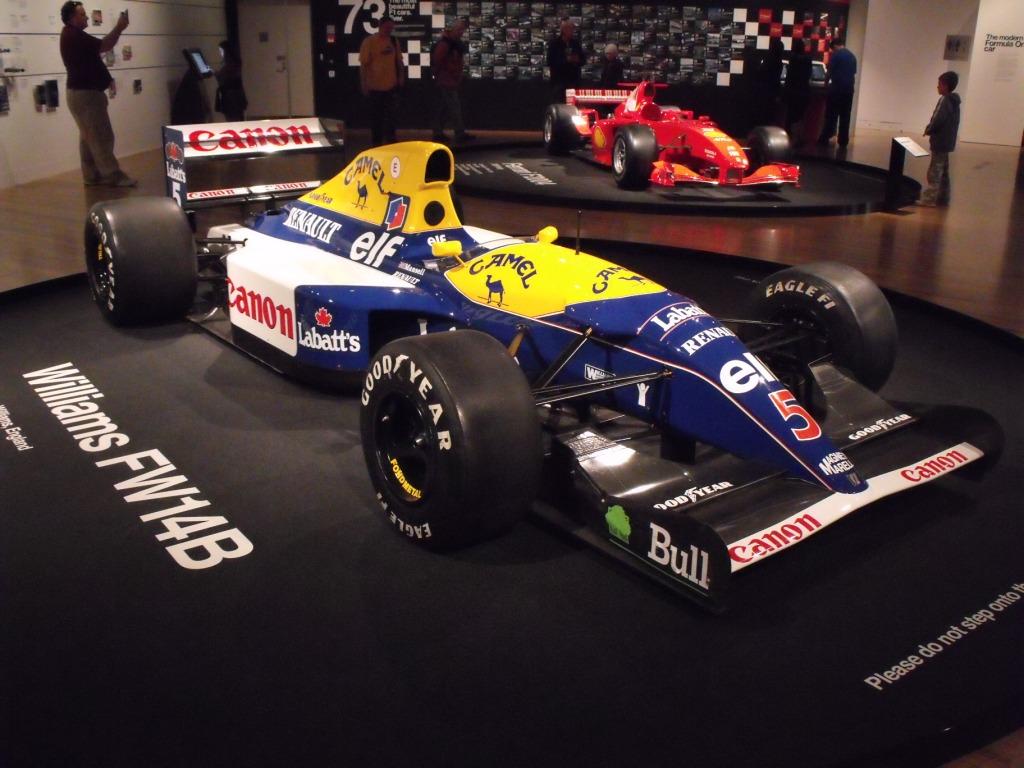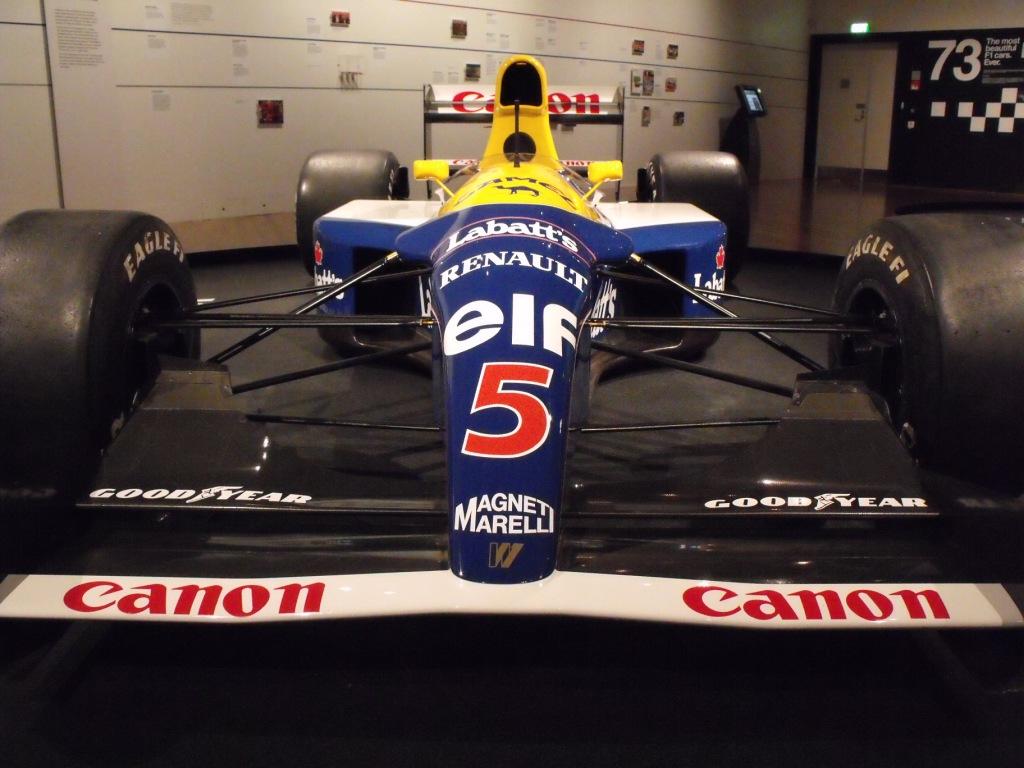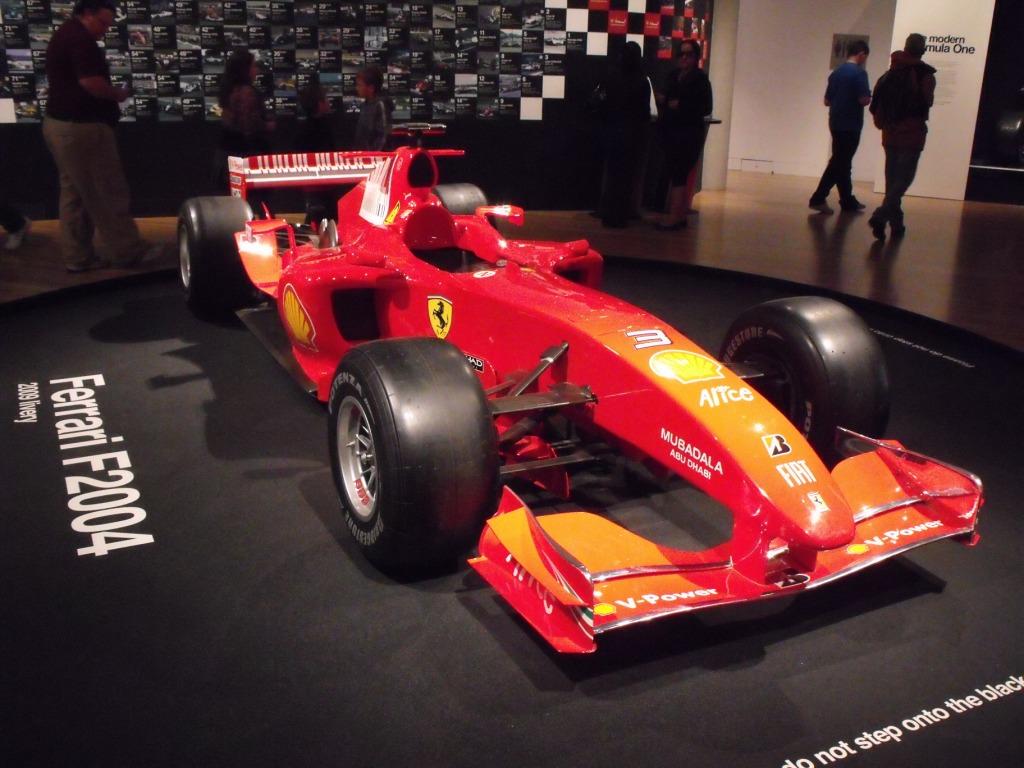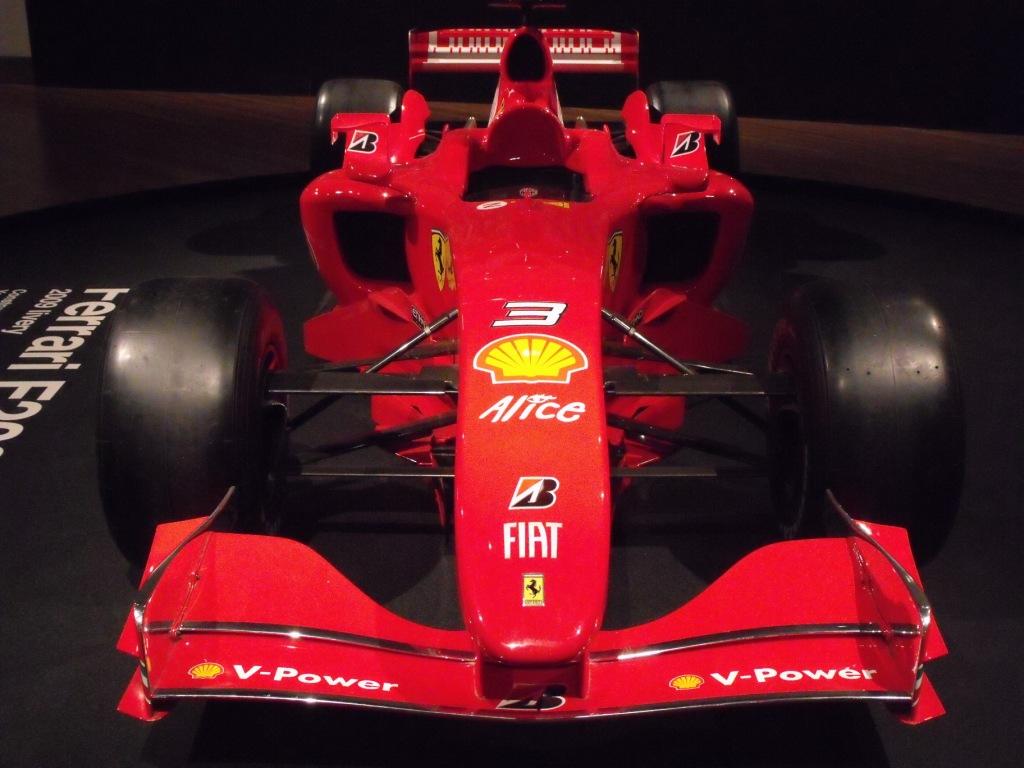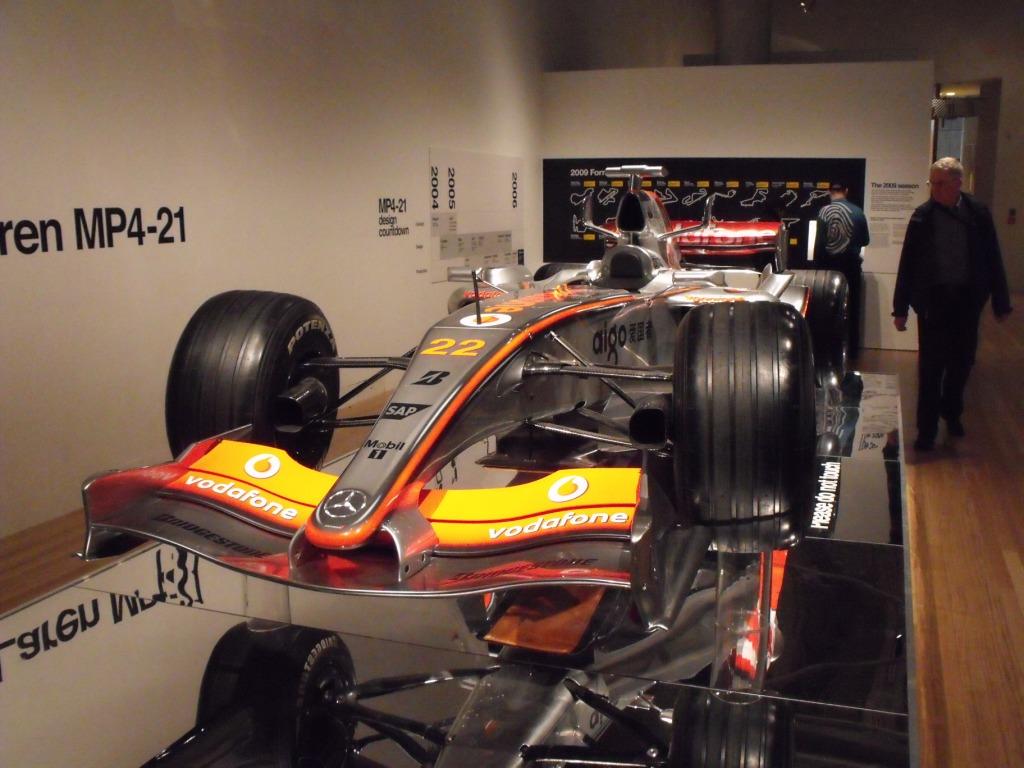Formula One: The Great Design Race
This was an exhibition that was held at the Te Papa Museum, Wellington NZ in 2009 and it traced the development of the Formula One racing car from the 1950's to the 2000's - one of the great design stories of our time. The exhibition was also an opportunity to honour New Zealand's three great F1 drivers - Bruce McLaren, Denny Hulme and Chris Amon. Click on the image for a larger version.
Lotus 16
The Lotus 16 was the first Lotus car designed by Colin Chapman specifically for Formula One racing. It carried many technological features, including an innovative suspension system called "Chapman Struts". This was one of the first rear independent suspension designs to be incorporated into a Formula One car and offered better traction and handling than previous systems. The Lotus 16 also had disc brakes all round and the car's engine sat in the front of the space-frame chassis - in front of the driver, who sat in a reclined position which was unusual for the time. The Lotus 16 raced the Cooper T51 during the 1959 season and finished fourth in that year's constructors' championship. The car's best result was a fourth for driver Innes Ireland in the 1959 Dutch GP.
Cooper T51
The rear-engined Cooper T51 continued the victory run sparked by the Cooper T43, which in 1958 became the first rear-engined car to win a Formula One World Championship Grand Prix. There were a number of advantages to mounting the engine behind the driver: with no drive shaft under the seat a lower centre of gravity improved cornering; no drive shaft and a smaller car saved weight; and a smaller frontal area improved aerodynamics. Also, by locating the fuel tanks on either side of the cockpit rather than at the rear, the car handled better with different fuel loads. The T51 dominated the 1959 season, with Jack Brabham winning the Drivers' Championship, and the Cooper Team winning the Constructors' Championship. Bruce McLaren drove a T51 to victory at the 1959 US Grand Prix becoming the first New Zealander to a Formula One World Championship Grand Prix.
For the 1966 Formula One season, engine capacity was doubled to 3 litres. Many thought this would favour Ferrari and it's V12 engine, but Jack Brabham and Ron Tauranac, designer and co-founder of Motor Racing Developments (run by the Brabham Racing Organisation) had other ideas. They joined a light space frame chassis to an Oldsmobile-based 3-litre Repco V8 engine, sourced from Australia. The Repco V8's 285bhp was much less than Ferrari's V12's 360bhp, but the light-weight BT20 used much less fuel to complete the race. Driving BT19 and BT20 cars, Jack Brabham won the 1966 World Drivers' Championship and the Brabham team won it's first Constructors' Championship. New Zealander Denny Hulme celebrated his first Formula One victory in the 1967 Monaco Grand Prix in a BT20. He went on to win the 1967 Drivers' Championship with Team Brabham again taking the Constructors' Championship.
McLaren M7A
The McLaren M7A, designed by Robin Herd and Gordon Coppuck, entered the European Formula One season in 1968. The car featured a Ford Cosworth Double Four Valve (DFV) engine, which had made it's debut in a Lotus 49 in 1967, following the 1966 change to a 3-litre formula. Developed by Cosworth Engineering for the Ford Motor Company, the DFV was a light, compact and relatively cheap and effectively replaced the Conventry Climax as the standard F1 engine. McLaren finally became a consistent front-runner in the M7A, recording the team's first victory and making Bruce McLaren the second Grand Prix driver to win a race in a car of his own construction, at the 1968 Belgian GP. The same year, Denny Hulme drove the McLaren M7A to victory in the Canadian GP with Bruce Mclaren coming second - the first 1-2 finish for the McLaren team in a Formula One World Championship Grand Prix.
The British Racing Motors P160 was designed by Tony Southgate for the 1970 Formula One season and in three years won three races. The 1971 Italian Grand Prix at Monza was one of the most exciting F1 races ever. The first six cars crossed the finish line within a second of each other, with driver Peter Gethin narrowly taking victory in his P160 by one-hundredth of a second. Not only was it the smallest margin of victory recorded up to then in F1 history, but at an average speed of 242.616 kph, it was also the fastest race. New Zealander Howden Ganley also drove a P160 in the race finishing 5th. The P160 took British Racing Motors to second in the 1971 Constructors' Championship, behind Ken Tyrrell.
McLaren-Honda MP4/4
The McLaren MP4/4's 1988 tally of 15 wins from 16 Grand Prix is one of the most remarkable achievements in the sport. Team McLaren's MP4/4s also took 10 second places, 15 pole positions, 10 fastest laps and both the Drivers' and Constructors' Championships. The car's turbocharged Honda RA168E V6 engine was it's crucial advantage. In the final year that turbocharged engines were permitted in Formula One, the Honda was limited to 150 litres of fuel and a maximum boost of 2.5 bar of pressure. But it could deliver up to 900 bhp and was easy to work with and reliable. In conjunction with a balanced chassis and well considered aerodynamics, the MP4/4 could be adjusted to meet the particular demands of every circuit. There were two other reasons for the car's success - drivers Alain Prost and Ayrton Senna (who triumphed in the Drivers' title). In the MP4/4, they were virtually unbeatable over the 1988 season.
Williams FW14B
The Williams FW14B monopolised the 1992 Formula One season. Nigel Mansell won nine races and the Drivers' Championship; fellow driver Riccardo Patrese won once and finished second six times and the Williams team won the Constructors' Championship. One of the FW14B's key technologies was active suspension - a computer controlled system that altered the car's suspension and aerodynamics by hydraulically optimising it ride height and attitude during a race. It was first introduced by Colin Chapman at Lotus in the late 1980s but Williams perfected it. Active suspension greatly improved cornering, accelerating and braking and allowed the FW14B's underside to remain millimetres from the ground. The system was intensely complicated, with the car's computer receiving up to 3000 data samples per second. The FIA banned active suspension in 1994 because it's expense gave the wealthier teams an unfair advantage.
The design philosophy behind the F2004 was to lower the centre of gravity to optimise aerodynamic efficiency and the performance of the Bridgestone tyres and 053 engine. Fundamental changes were made to the engine cover and rear wing assembly to satisfy new 2004 regulations and every area affecting aerodynamics was further developed with many new components. A new approach to materials for the gearbox casing (cast titanium with carbon fibre skin) and rear crash structure resulted in considerable weight saving. All systems - water, engine, transmission and hydraulics - were reviewed to maximise performance and serviceability and to meet new race weekend timetable and procedures.
McLaren Mercedes MP4/21
